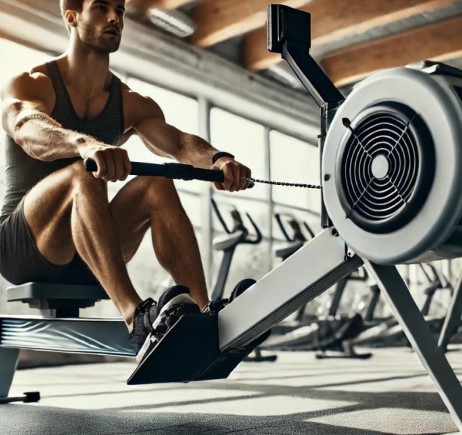
Rowing Machine Secrets: Perfecting Your Workout with Damper Settings
Rowing machines are a staple in fitness regimens for their ability to provide a full-body workout that combines cardiovascular endurance with muscle strength. One crucial feature that significantly influences the effectiveness of your workout on a rowing machine is the damper setting. Understanding the science behind damper settings and how to adjust them can help you optimize your workout for better results. In this blog, we will explore the intricacies of rowing machine damper settings, focusing on how to tailor them to suit your fitness goals.
What is a Damper Setting?
The damper setting on a rowing machine controls the amount of air flowing into the flywheel housing, which in turn affects the resistance you feel while rowing. Higher damper settings allow more air into the flywheel, increasing resistance and mimicking the feel of rowing a heavy boat. Lower damper settings allow less air, making the workout feel like rowing a sleek, lightweight boat.
Understanding Resistance and Damper Settings
It’s a common misconception that the damper setting directly controls resistance. Instead, it adjusts the feel of the rowing stroke. The actual resistance is determined by how hard you pull on the handle. Here’s a closer look at how different damper settings can affect your workout:
Low Damper Setting (1-3): Mimics the feel of rowing on calm water in a sleek boat. This setting requires faster, more frequent strokes and is ideal for cardiovascular conditioning and endurance training.
Medium Damper Setting (4-6): Offers a balanced rowing experience, providing moderate resistance. This setting is suitable for a mix of cardio and strength training, making it versatile for various workout routines.
High Damper Setting (7–10): Simulates rowing in a heavy boat or against strong currents. This setting requires more power per stroke, emphasizing strength and power development. It’s great for building muscle but can be taxing on the cardiovascular system.
Read also: Udyam Registration for Service Sector Businesses: A Comprehensive Guide
Optimizing Your Workout with Damper Settings
The key to optimizing your workout lies in understanding your fitness goals and adjusting the damper setting accordingly. Here are some tips to help you get the most out of your rowing machine:
For cardiovascular endurance:
Setting: Low (1-3)
Workout Focus: Aim for longer sessions at a steady pace. Focus on maintaining a high stroke rate (24–30 strokes per minute) to keep your heart rate elevated.
Benefit: It enhances aerobic capacity and endurance, making it suitable for those looking to improve their overall cardiovascular health.
For strength and power:
Setting: High (7-10)
Workout Focus: Incorporate shorter, high-intensity intervals. Aim for lower stroke rates (20–24 strokes per minute), but pull harder with each stroke to build strength and power.
Benefit: Develops muscle strength, particularly in the legs, back, and arms, while also improving anaerobic capacity.
For a balanced workout:
Setting: Medium (4-6)
Workout Focus: Mix of steady-state rowing and interval training. This setting allows you to transition smoothly between endurance- and strength-focused segments.
Benefit: Provides a well-rounded workout that improves both cardiovascular fitness and muscle strength.
Practical Tips for Using Rowing Machine Damper Settings
Warm-Up and Cool-Down: Always start your workout with a low damper setting for a gentle warm-up. Similarly, use a low setting during your cool-down to help your muscles recover.
Technique Over Resistance: Focus on perfecting your rowing technique rather than just increasing resistance. Proper form ensures you maximize the benefits of your workout while minimizing the risk of injury.
Consistency is Key: Regardless of the damper setting, consistency in your workout routine is crucial for long-term fitness gains. Aim for regular sessions, and gradually adjust the intensity as your fitness improves.
Conclusion
The damper setting on a back rowing machine is a versatile tool that can help you tailor your workouts to meet specific fitness goals. Whether you’re aiming to boost cardiovascular endurance, build muscle strength, or achieve a balanced fitness routine, understanding how to adjust and optimize the damper setting is key. By paying attention to your goals and adjusting your rowing machine settings accordingly, you can unlock the full potential of your workouts and achieve better results. Embrace the science of damper settings, and let it guide you to a more effective and enjoyable rowing experience.






